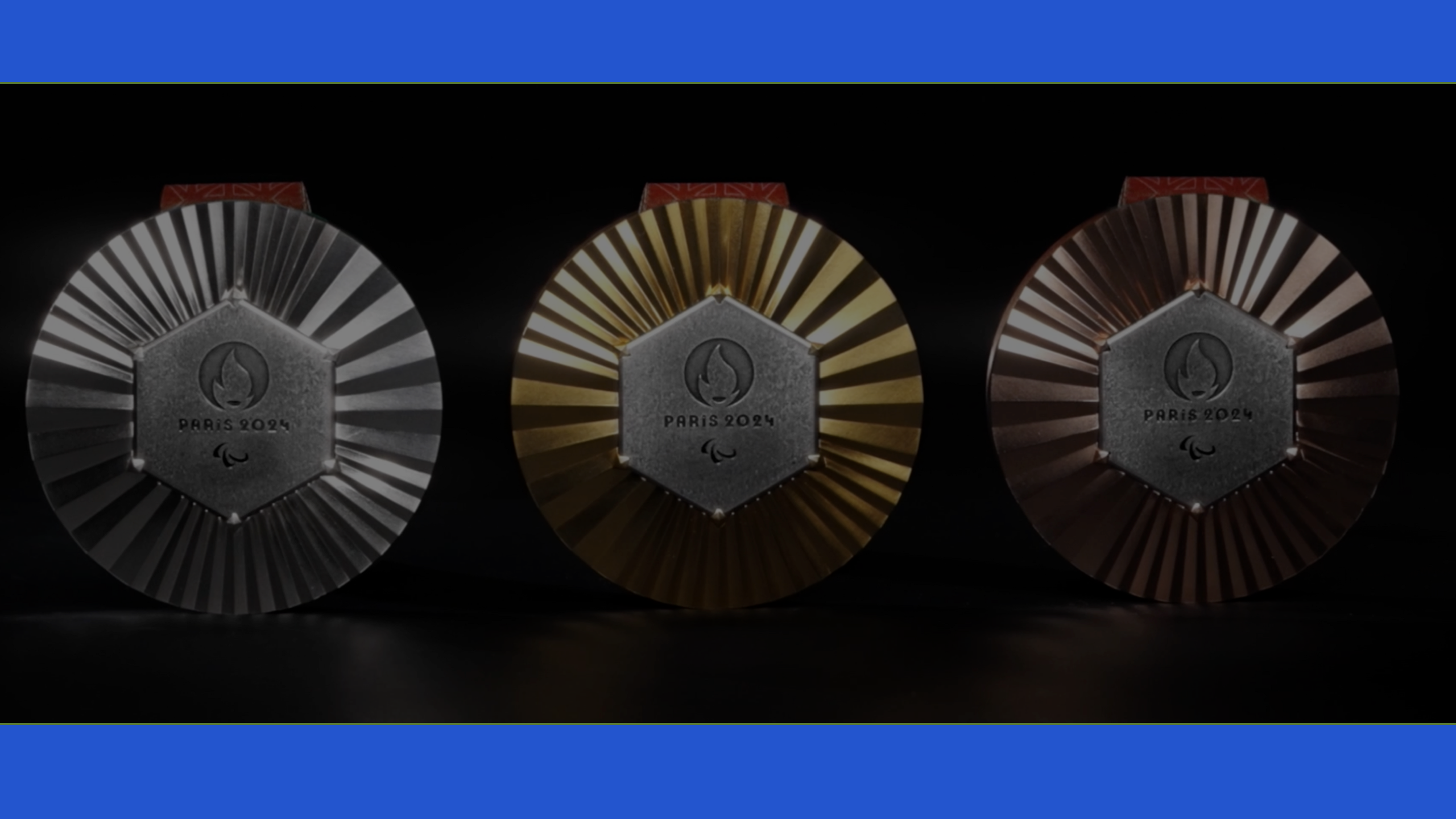Going For Olympic... Silver?

Photo courtesy of the Paris 2024 Olympic
The 2024 Summer Olympics kicked off over the weekend. Thousands of athletes from all over the world have converged on Paris with one goal in mind.
Win silver!
Now, you're probably thinking, 'Umm...Mike, they're going for gold.' And technically, you're correct. But did you know that gold medals are mostly made from silver?
True story.
Gold medals awarded at the 2024 Olympics contain only 6 grams (.21 ounces) of gold plate covering 523 grams (18.44 ounces) of silver.
Silver medals are pure silver, weighing in at 525 grams.
Bronze medals weigh 455 grams and are made of a composite of copper, tin, and zinc.
The medals for the Paris Games have a unique feature - a piece of iron from the Eiffel Tower.
According to the New York Times, "When the Eiffel Tower underwent renovations in the 20th century, they preserved pieces of the original iron and kept them in storage. Those chunks make up the hexagon figure in the middle of the Olympic gold medal."
How Much Are Olympic Medals Worth?
Now that you know gold medals are mostly silver, you might think the winning athletes are getting ripped off.
Don't worry. They'll be fine. After all, the real prize is the victory.
And even though gold medals are mostly silver, they're still worth significantly more than the second-place prize.
According to Oxford Economics, a gold medal is worth about $1,027. (Not factoring in the fact that it's hard to put a value on the iron from the Eiffel Tower.)
The silver medal is only valued at $535.
That's because a little gold is worth a lot. Based on this morning's spot price of gold ($2,403), that .21 grams of gold would cost $504.63, almost as much as an entire silver metal.
Oh, and what about the bronze medal? A paltry $4.60.
According to Olympic records, medals of pure gold were only handed out twice - the first time during the St. Louis Games in 1904 and then during the London Games in 1908. The medals were much smaller back then, and the average price of gold in 1904 was a mere $18.96 per ounce.
As Oxford Economics points out, the medals handed out in Paris over the next couple of weeks will probably be worth a lot more next year.
"The rising value of these medals can be attributed to the increase in precious and industrial metals. Forecasts from our Global Commodity Forecast Service reveal that both precious and industrial metal prices will rise considerably in the future, as their fundamentals look as bright as ever. We have been consistently vocal about gold’s upside potential this year due to its strong fundamentals. "
It's also interesting to note that silver is significantly undervalued compared to gold from a historical perspective.
The gold-silver ratio is currently 85-1. That means it takes 85 ounces of silver to buy an ounce of gold.
In the modern era, the gold-silver ratio has averaged between 40-1 and 60-1. When the gold-silver ratio gets far above the high end of that historical average, it tends to return to the mean with a vengeance.
For instance, in 2020, the gold-silver ratio set a record of 123-1 as Covid hysteria gripped the world and then plunged to around 60-1 as central banks globally cranked up the money creation machine to cope with governments shutting down economies.
In another example of this snap-back, the gold-silver ratio fell to 30-1 in 2011 after rising to over 80-1 during the money creation of the Great Recession in the wake of the 2008 financial crisis.
All of this indicates silver has plenty of room to run higher, so winning silver might not be such a bad deal!
More By This Author:
Market Volatility, Political Drama Increases Uncertainty As Metals Fall
Did Joe Biden Give Us A Record Breaking Stock Market?
African Countries Are Turning To Gold



